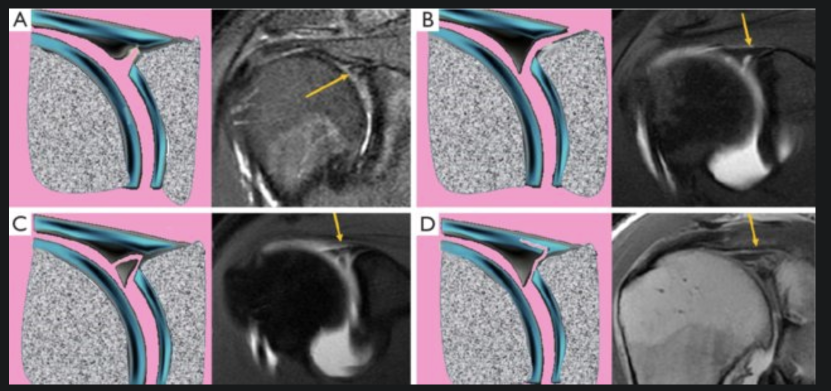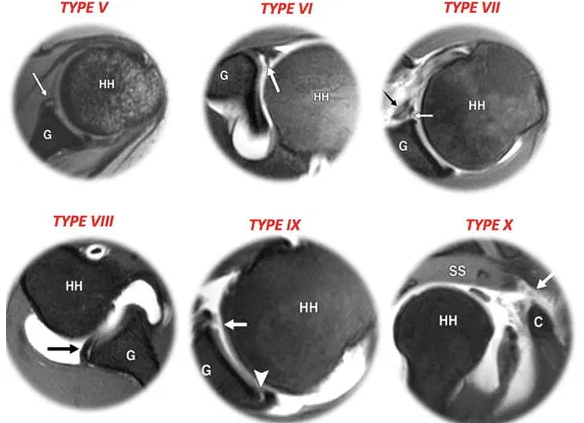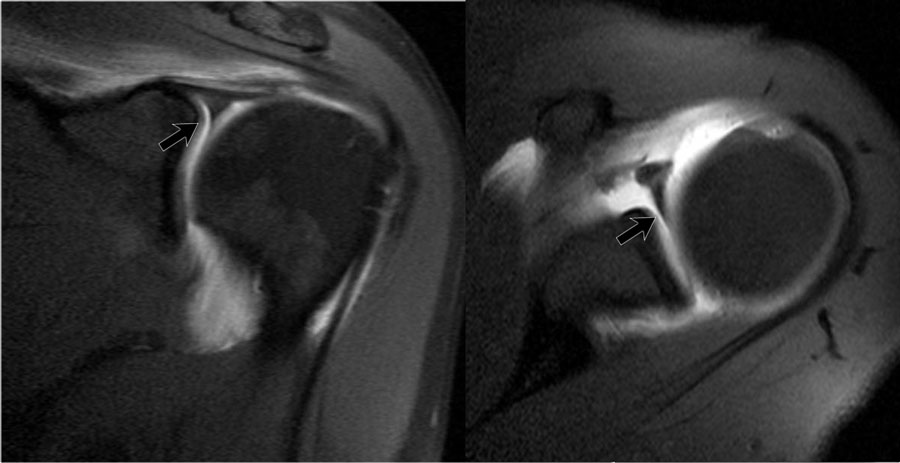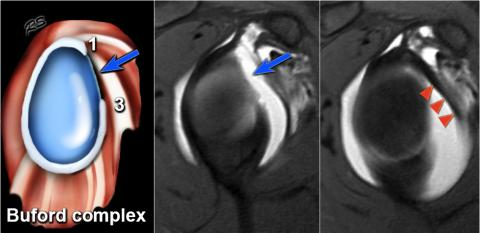SLAP
Superior Labrum from Anterior to Posterior
Définition
- Lésion du complex labro-bicipital à son attache glénoidale
- Avec différentes extensions possibles
Etiologie
- Mouvement de lancer
- Chute sur la main bras tendu (compression du long biceps)
- Arrachement du long biceps
- Luxation

SLAP VS Bankarts Lesions
- SLAP = Lésion du complex labro-bicipital à son attache glénoidale = Commence à 12h (insertion du long biceps) et s’étend entre 10h et 2h voir plus
- Bankart = atteinte du cartilage glénoidal = Commence vers 3-6h (impact antéro-inférieur de la tête) (CF: Instabilité antérieure de l’Epaule)

Classification SLAP
- Type I: Irregularité du labrum (peu de traduction en imagerie)
- Type II: Séparation complète du bourrelet s’étendant à l’insertion du TLB. DD avec le recessus = irregularité, etendue (CHIR)
- Type III: Bourrelet détaché en anse de sceau mais respect de l’insertion du TLB
- Type IV: Lésion du bourrelet et du TLB (CHIR)

Classification extended SLAP
- Type V: + abnormal signal in anterior labrum
- Type VI: Flap tear with detached labrum torn free at one end
- Type VII: + longitudinal high signal tear of middle glenohumeral ligament
- Type VIII: + high signal posterior labral tear extending down to at least 9 o’clock (presuming 3 o’clock is universal anterior)
- Type IX: + anterior and posterior labral tears
- Type X: + high signal tear of rotator interval
- Type XI: + high signal tear of superior glenohumeral ligament (SGHL)
- Type XII: Anterosuperior labrum + undersurface interior cuff (SLAC) high-signal tears


SGHL: Superior glenohumeral ligament
MGHL: Medial glenohumeral ligament
IGHLC: Inferior glenohumeral ligament complex
Variantes du Labrum


Récessus Sub-labral

Recessus sub-labral
Foramen Sub-labral
- Labrum non attaché entre 12h et 3h

Foramen sub-labral
Complexe de Bufford


Complexe de Bufford: Partie antérosupérieure du labrum absent, ligament MGHL hypertrophié
recessus sublabral buford SLAPP Shoulder ligament gléno glenohumeral glénohuméral gléno-huméral inférieur supérieur complexe orero